Up, up and hooray! MailOnline goes for a flying lesson – here’s how we get on… (and the startling things we discover about flying tiny aircraft)
“Where do you want to go?” the pilot asks as we walk toward the plane.
“Oh, um… can we go to Oxford and back?” I ask. “Sure, no problem,” comes the reply.
This is no ordinary flight. For starters, it seems like I get to decide where we fly. But also – because I’m at the controls. Despite the fact that I’ve never flown a plane before.
There’s no need to panic at the Civil Aviation Authority though – I’m getting my first ever flying lesson and my flight instructor, James, will be handling the tricky bits. Like landing. And taking off.
The location for the lesson is Turweston Aerodrome in Northamptonshire, just south of Silverstone Circuit, with James, one of the flying instructors from Turweston Flying Club.
Ted Thornhill takes a flying lesson at Turweston Flying Club, based at Turweston Aerodrome in Northamptonshire
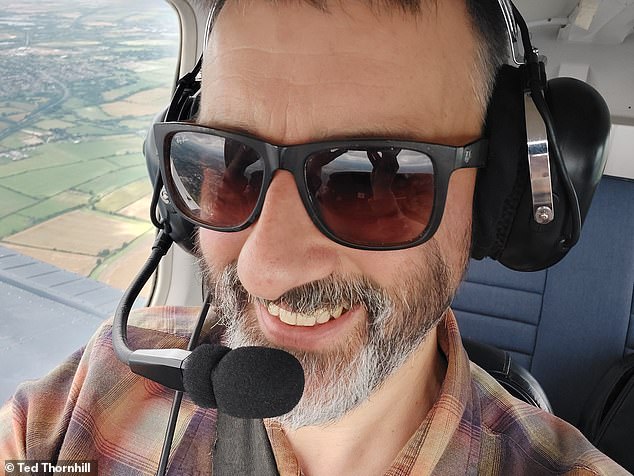
Ted flies the plane for much of the hour-long lesson
It follows a lesson I had in a British Airways Boeing 777 flight simulator with training captain Al Bridger. He commented that I was flying the plane well with the all-important ‘small movements’ of the control column – and that perhaps I should have a real lesson some day.
After telling my lovely mother about this, she surprised me with the one hour Turweston Aerodrome experience as a birthday present.
The plane I’m sitting in here is slightly smaller and slower than the mighty Boeing 777: a 23-foot-long Piper Warrior II, which seats two pilots plus a couple in the back and can reach speeds of more than 100 mph when you put your foot to the ground.
The hardest part of the class comes right at the beginning: climbing in.
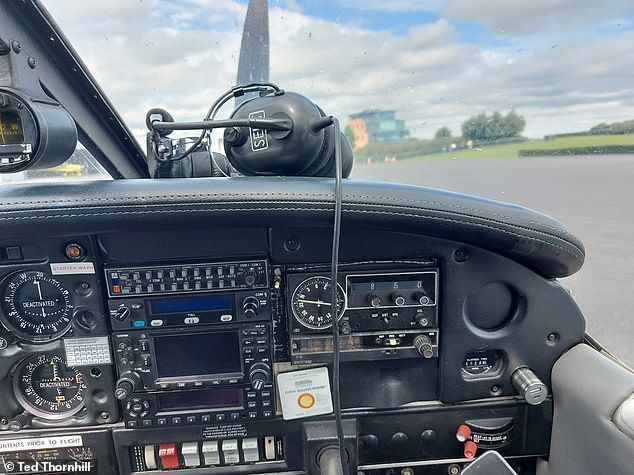
Ted’s flight takes place in a refurbished Piper Warrior II aircraft
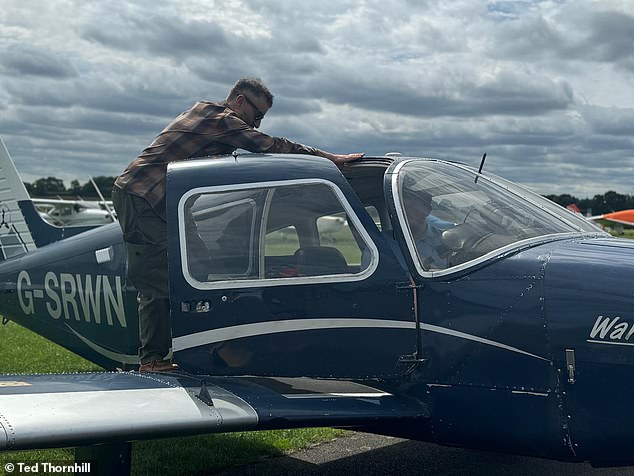
The hardest part of the class? “Climbing inside,” says Ted
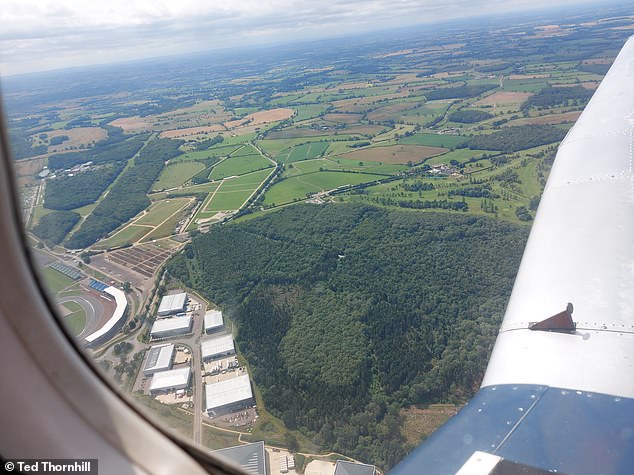
Ted flies over the Silverstone Circuit (above, bottom left) on his way to Oxford and back
No air bridges here. I have to step carefully onto the wing, avoiding the flap, and then lower myself inside.
Once the doors are closed, it looks like a greenhouse. James opens a small window on the side and lets us go. He assures me that the cockpit will cool down as we fly, because air comes up through the fuselage.
We waddle across a strip of grass along the runway. When we reach the end, we pause for pre-flight checks.
James revs the engine to 2,000 rpm, applies the brakes, and checks that key instrumentation and electrical components are working and that there is sufficient fuel.
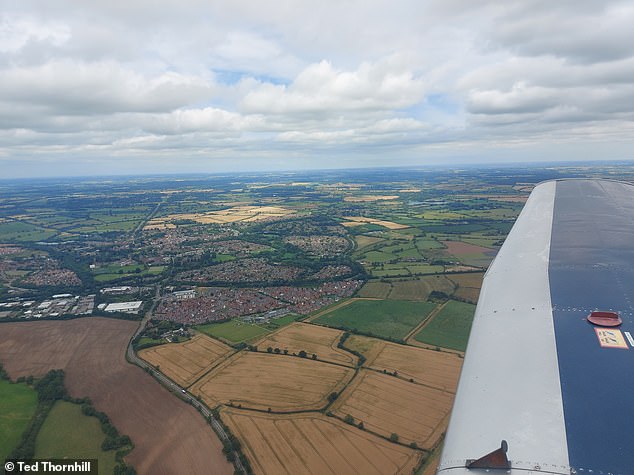
Buckingham from above. Ted reveals he flew between 2,000 and 2,500 feet
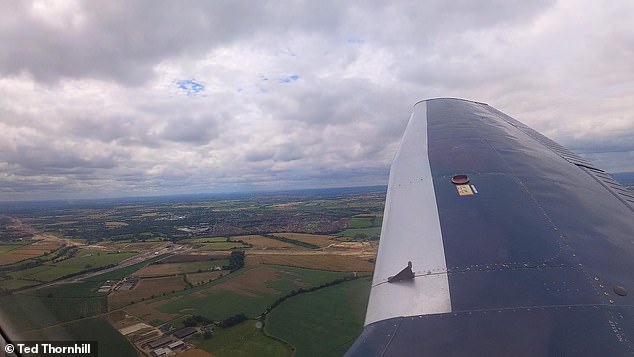
Above you can see Brackley, where Ted went to school in the 80s and which is now next to the HS2 line (visible in the foreground)
Once he is satisfied that the plane is airworthy, we are immediately cleared for take-off (this is not Heathrow) and within seconds we are in the air.
And what an absolute thrill. This is about as raw an airplane flying experience as you can get. No autopilot or cabin service or heads-up displays. Just me, James and an awesome flying machine that sounds like a bus you could probably land at a school dance.
Within minutes James has me taking over the controls – and boy are they sensitive.
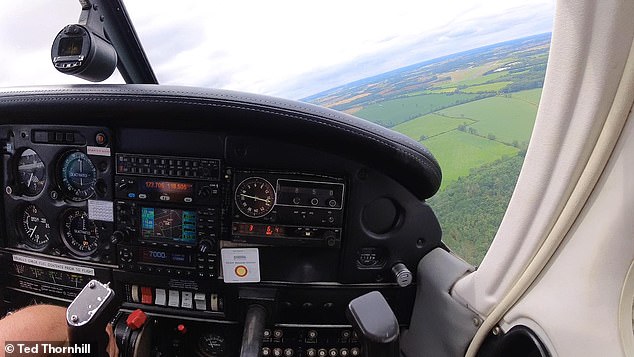
Ted writes: ‘Besides the sensitivity of the controls, I also notice how much the plane moves – it never stops moving up and down and left and right’
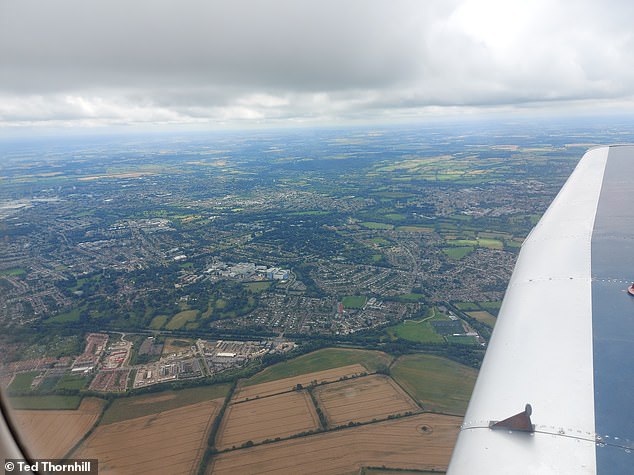
The Warrior II takes approximately 30 minutes to reach Oxford (above) from Turweston Aerodrome (with additional time for a fly-past over Buckingham)
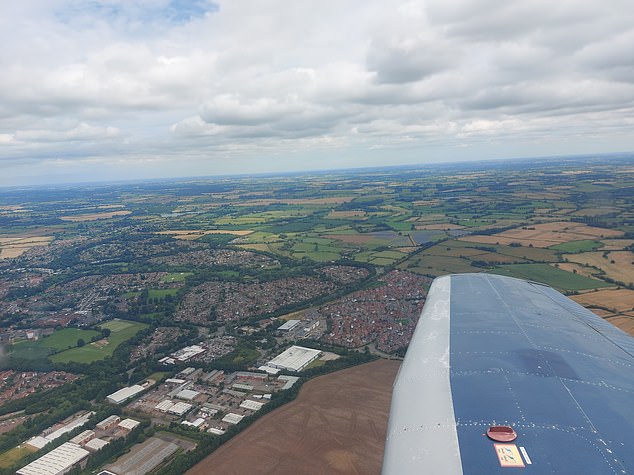
Now that I’m actually flying, I realize how important small movements of the stick are. I’m always just one small hand movement away from an unwanted stunt show.
At first I am tense and excited at the same time. I enjoy every moment and also don’t want the plane to crash.
Besides the sensitivity of the controls, I also notice how often the plane moves: it never stops moving up and down and left and right, which is a bit disconcerting. But being in control calms the nerves. After about 15 minutes I relax into the roll and enjoy gazing at the very green and pleasant Northamptonshire and Oxfordshire countryside from an altitude of between 2,000 and 2,500 feet.
The flight has a nostalgic edge, as after flying over the Silverstone and Buckingham circuits, home to the aforementioned Mother Thornhill and the scars left on the landscape by the HS2 works, we glimpse Brackley, where I went to school in the 1980s.
At a speed of about 90 to 100 miles per hour we reach Oxford after about 30 minutes and turn left to return. The magnificent spires of the city are clearly visible on the right.
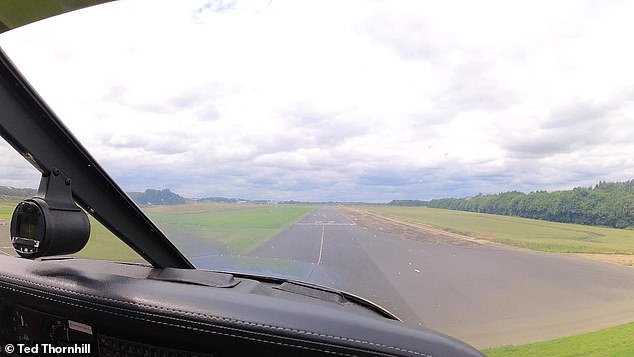
“The flight is over much too quickly,” Ted writes, “James lands the plane smoothly despite the crosswind”
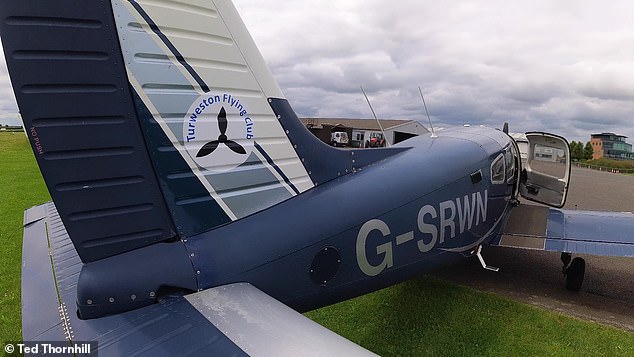
The Warrior II is quite old, but has undergone several engine renovations and is equipped with modern GPS and radio systems, bolted to the instrument panel
![Up, up and hooray! MailOnline goes for a flying lesson - here's how we get on... (and the startling things we discover about flying tiny aircraft) 24 Ted is all happy again on the ground. He says: '[The lesson] is the purest flying experience in an airplane you can get'](https://nybreaking.com/wp-content/uploads/2024/07/1722151599_922_Up-up-and-hooray-MailOnline-goes-for-a-flying-lesson.jpg)
Ted is all happy again on the ground. He says: ‘[The lesson] is the purest flying experience in an airplane you can get’
In both directions, James, an aircraft mechanic training to be a pilot for an airline, has me make turns and keep the plane flying straight and level. It’s not easy: constant adjustments have to be made to the control column to keep the nose pointed toward the horizon and away from my mother’s house and my old school.
The Warrior II is quite old, but has undergone several engine renovations and is equipped with modern GPS and radio systems, which are mounted on the instrument panel.
James, meanwhile, has a flight map on a smartphone strapped to his left thigh.
Our own eyes also have to help with navigation. We constantly scan the skies for other aircraft, with James explaining that we can talk to passing aircraft if necessary to find out their intentions.
The flight is over much too quickly and James lands smoothly, despite the crosswind.
I feel dizzy as a schoolboy. And I already know what I want for Christmas…
For more information about flying lessons at Turweston Flying Club, visit –turwestonflyingclub.org.uk.
